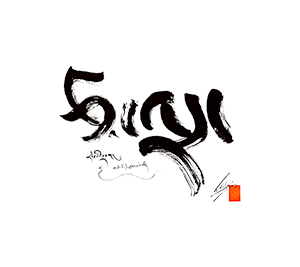Philosophical positions of this person
"Rikrel, in contrast to Sapen and other scholars at Sakya monastery, argues that all sentient beings have an inherent buddha endowed with enlightened qualities within." Wangchuk, Tsering. The Uttaratantra in the Land of Snows, p. 29.
According to Wangchuk, Tsering, "Rikrel not only situates the Uttaratantra within sutric Mahāyāna literature, but he also includes it in the last wheel as a work expounding on both sutras and tantric literature." The Uttaratantra in the Land of Snows, p. 29.
- However, Kano suggests his view of RGV relates to both 2nd and 3rd turnings. "In his Byams pa dang 'grel ba'i chos kyi byung tshul, bCom-ldan-ral-gri asserts that the teaching of the RGV contradicts neither the Two Truths doctrine of Madhyamaka nor the Yogācāra doctrine of the Threefold Intrinsic Nature, while the other four treatises of Maitreya teach either one or the other of these two doctrines (but not both at the same time)." Kano, K., Buddha-Nature and Emptiness, p. 342.
This assertion is applied retroactively since he predates the category.
- "bCom-ldan-ral-gri of sNar-thang monastery is, according to Tāranātha, a forerunner of the gzhan stong tradition established by Dol-po-pa. bCom-ldan-ral-gri, in his RGV commentary, does not systematically teach the gzhan stong doctrine (and is not, of course, aware that he would later be considered a gzhan stong forerunner), but he does expound some fragmentary elements that possibly fink him to the gzhan stong position of Dol-po-pa". Kano, K., Buddha-Nature and Emptiness, p. 342.
- "Given Rikrel's interpretation of the Uttaratantra, it is no wonder that later Jonang scholars would retrospectively include him in the Jonang lineage of other-emptiness transmission, even though he does not employ terms such as "other-emptiness" and "all-basis-gnosis" (kun gzhi ye shes), which would become crucial for Dölpopa's presentation of tathāgata-essence." Wangchuk, Tsering. The Uttaratantra in the Land of Snows, p. 30.
Though perhaps not explicitly fitting into this category, Kano states,
- "His understanding of Buddha-nature is compatible with that of the tradition of bTsan Kha-bo-che, which defines Buddha-nature as the “natural luminous mind,” and also in accordance with Dol-po-pa’s stance, which sees the Buddha-nature teaching being echoed in tantric literature." Kano, K., Buddha-Nature and Emptiness, p. 342.
- And, "...it is obvious that bCom-ldan-ral-gri does not follow rNgog’s reasoning that leads to identifying Buddha-nature with emptiness." Kano, K., Buddha-Nature and Emptiness, p. 316.
"In his commentary on RGV I.3, bCom-ldan-ral-gri defines Buddha-nature as “the natural luminous mind that is inseparable from dharmatā,” and, glossing RGV 1.153, states: “the ultimate truth, which is unconditioned and primordially existent by itself, is the element (i.e. Buddha-nature).” Kano, K., Buddha-Nature and Emptiness, p. 342. (see also Ibid. p. 315.)
Other names
- བཅོམ་ལྡན་རལ་གྲི་ · other names (Tibetan)
- བཅོམ་ལྡན་རིགས་པའི་རལ་གྲི་ · other names (Tibetan)
- རིག་རལ་ · other names (Tibetan)
- དར་མ་རྒྱལ་མཚན་ · other names (Tibetan)
- bcom ldan ral gri · other names (Wylie)
- bcom ldan rigs pa'i ral gri · other names (Wylie)
- rig ral · other names (Wylie)
- dar ma rgyal mtshan · other names (Wylie)
- Rikrel · other names
- bCom-ldan-ral-gri · other names
Affiliations & relations
- Kadam · religious affiliation
- snar thang dgon pa · primary professional affiliation
- nil · teacher
- nil · student


